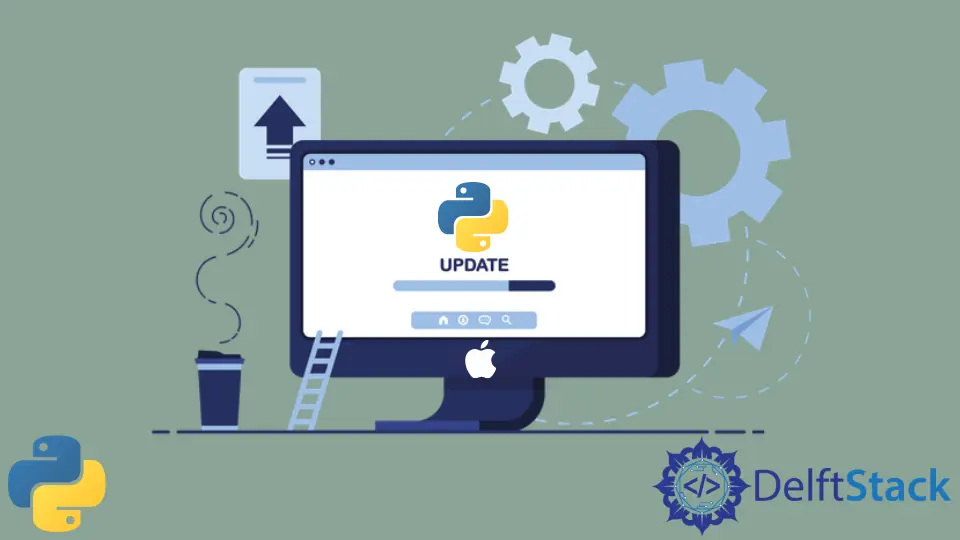Methods to Update Python on Mac
- Updating Python Using Homebrew
- Updating Python Using the Official Installer
- Updating Python Using Pyenv
- Conclusion
- FAQ

Updating Python on your Mac can seem daunting, especially if you’re new to programming or haven’t done it before. However, keeping your Python version up to date is crucial for accessing the latest features, security patches, and performance improvements.
In this tutorial, we’ll explore various methods to update Python on your Mac. Whether you’re using Homebrew, the official Python installer, or managing your Python versions with pyenv, we’ve got you covered. By the end of this article, you’ll have a clear understanding of how to keep your Python environment fresh and efficient. Let’s dive in!
Updating Python Using Homebrew
Homebrew is a popular package manager for Mac that simplifies the installation and management of software. If you already have Homebrew installed, updating Python is a breeze. First, you’ll want to ensure that Homebrew itself is up to date. Open your terminal and run the following command:
brew update
This command fetches the latest version of Homebrew and updates the package database.
Next, to upgrade Python, you can use the following command:
brew upgrade python
This command upgrades Python to the latest version available in the Homebrew repository.
Output:
==> Upgrading 1 outdated package:
python 3.x.x -> 3.y.y
After the upgrade, you can verify the installed version of Python by running:
python3 --version
Output:
Python 3.y.y
Using Homebrew not only simplifies the process of updating Python but also allows you to manage other packages easily. If you encounter any issues, Homebrew’s community is quite active, and you can find solutions or ask for help online.
Updating Python Using the Official Installer
If you prefer a more traditional approach, you can update Python by downloading the latest version from the official Python website. This method is particularly useful if you want to install a specific version or if you don’t have Homebrew installed.
First, visit the official Python website at python.org. Once there, click on the “Download Python” button, which will automatically detect your operating system and suggest the latest version.
After downloading the installer, open it and follow the on-screen instructions to complete the installation. During the installation process, make sure to check the box that says “Add Python to PATH.” This ensures that you can run Python from the terminal.
Once the installation is complete, you can check the version of Python installed by opening your terminal and running:
python3 --version
Output:
Python 3.y.y
This method is straightforward and gives you the flexibility to choose the version you want. It’s especially useful for developers who need to test their applications with different Python versions.
Updating Python Using Pyenv
For those who work on multiple projects requiring different Python versions, pyenv is an excellent tool. It allows you to easily switch between Python versions without affecting your entire system. To get started with pyenv, first, ensure you have it installed. If you haven’t installed it yet, you can do so via Homebrew:
brew install pyenv
After installing pyenv, you can install the latest version of Python using the following command:
pyenv install 3.y.y
Replace “3.y.y” with the specific version number you want to install. After the installation, you can set the newly installed version as the global default:
pyenv global 3.y.y
Output:
3.y.y
To verify that the new version is set as the default, run:
python --version
Output:
Python 3.y.y
Using pyenv not only helps in managing multiple Python versions but also makes it easier to switch between them for different projects. This is particularly beneficial for developers who are working in various environments.
Conclusion
Keeping your Python version updated on your Mac is essential for ensuring compatibility with libraries and frameworks you may be using. Whether you choose to use Homebrew, the official installer, or pyenv, each method has its advantages. Homebrew is great for simplicity, the official installer provides flexibility, and pyenv is perfect for managing multiple versions. By following the methods outlined in this article, you can confidently keep your Python environment up to date and running smoothly. Happy coding!
FAQ
-
How do I check my current Python version on Mac?
You can check your current Python version by opening the terminal and running the commandpython3 --version. -
Can I have multiple Python versions installed on my Mac?
Yes, you can have multiple Python versions installed using tools like pyenv, which allows you to switch between them easily. -
What should I do if I encounter issues while updating Python?
If you encounter issues, check the official documentation or community forums for troubleshooting tips. You can also seek help from the Homebrew or pyenv communities. -
Is it necessary to update Python regularly?
Yes, regularly updating Python ensures you have the latest features, security patches, and performance improvements.
- Can I uninstall an old version of Python?
Yes, you can uninstall an old version of Python using Homebrew or by removing it manually if installed from the official installer.